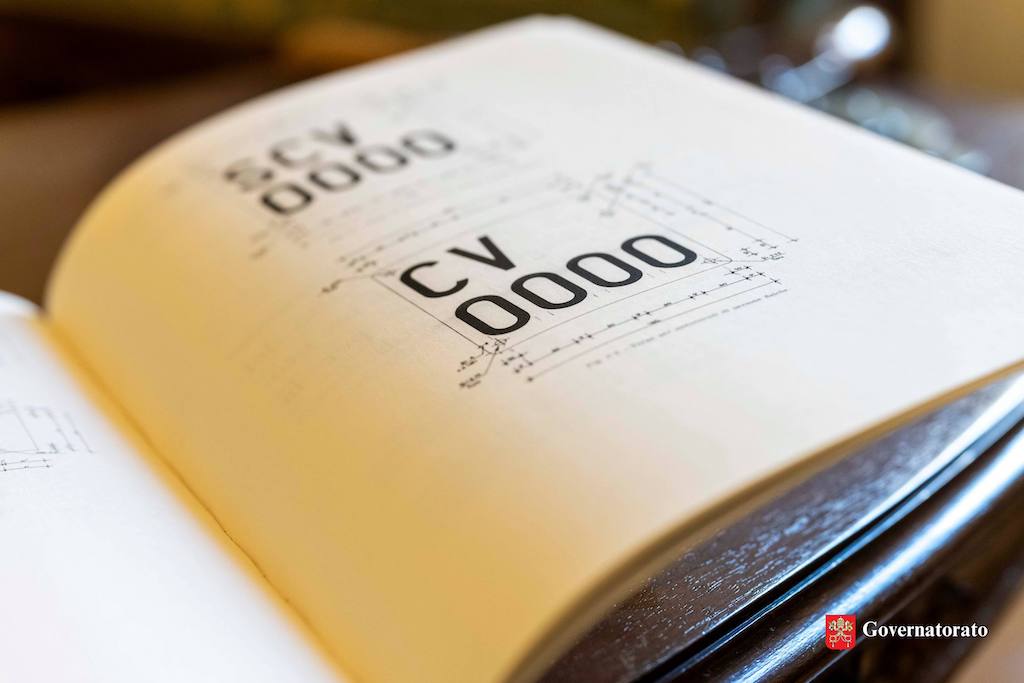The Vatican Department of Motor Vehicles and its responsibilities

SCV 1: The Pope's licence plate
SCV 1 is the licence plate of the Pontiff. The remaining 599 SCV licence plates are reserved for vehicles in circulation within Vatican City State. The Vatican Department of Motor Vehicles has been registering vehicles belonging to the Governorate and to the Bodies of the Holy See, since 1930. In addition to issuing driving licences to Vatican citizens and residents, the Department is also responsible for collecting road tax. The following is an interview with Elena Montesi of the Vatican Department of Motor Vehicles.
Is there a public Department of Motor Vehicles in the Vatican that is similar to ones in other countries?
Pontifical Law No. III, titled Law on citizenship and residence, dated 7 June 1929, instituted the Vatican Department of Motor Vehicles, which carries out the specific tasks of the public department of vehicles, within Vatican State. In accordance with the guidelines of the Secretary General of the Governorate, it is responsible for registering vehicles and issuing and renewing the driving licences of Vatican City State's citizens and residents. The Department is currently managed by the Legal office of the Governorate.
Can you give us some details regarding this service?
In carrying out the functions of a public vehicle department, the Vatican Department of Motor Vehicles is responsible for issuing driving licences, exclusively to Vatican City citizens and residents. All driving licences can be converted. In order to be able to drive in Italy and abroad, holders of a Vatican driving licence must also carry an International Drivers Permit, which has a validity of two years. The licence and the International Permit are issued by the Secretary General of the Governorate. Citizens and residents can take the theory test to be able to drive in the Vatican, and just like in Italy, they can obtain a learner's permit to allow them to take the practical exam for certification.
Who is eligible for a Vatican licence plate and what types of licence plates are there?
The first licence plates to be issued had the "SCV" code (1930) and are used today exclusively for institutional purposes, as they belong to the Governorate and to the Bodies of the Holy See. The first vehicles to have the SCV licence plate were part of the "pontifical garage", those of the papal entourage and important dignitaries. The red SCV 1 licence plate is reserved to vehicles of the Supreme Pontiff (pope mobile). The vehicles that belong to private Vatican citizens were initially issued with EE plates (foreign drivers). The current CV plate was introduced in 1988. It can be obtained by the Presidents and Secretaries of Dicasteries of the Roman Curia, Vatican citizens, the Bodies of Government and their Directors and the Governorate. SCV and CV plates have different sizes. The larger one, identified with a special seal, must be placed on the back of the vehicle, whereas the smaller one must be placed in the front of the vehicle.
Can you please give us some data on the types of registered vehicles -- when was the first vehicle registered?
There are currently some 600 vehicles with a SCV plate and about 300 vehicles with a CV plate.
Is there also a road tax to be paid? Are there any incentives for the renewal of the car fleet?
In the last year or so, the Governorate has introduced about 40 electric vehicles in various administrations, in an effort to reduce carbon emissions, thus beginning the gradual replacement of the fleet of vehicles. The plates of the vehicles that are no longer in use (scrapped or nationalized) must be returned to the Vatican department of motor vehicles, which in accordance with existing regulation, will demolish them. All those who have the right to a Vatican licence plate, with the exception of Cardinals and others who are exempt, must pay the road tax, whereas the majority of the Bodies, is exempt from the annual fee.






